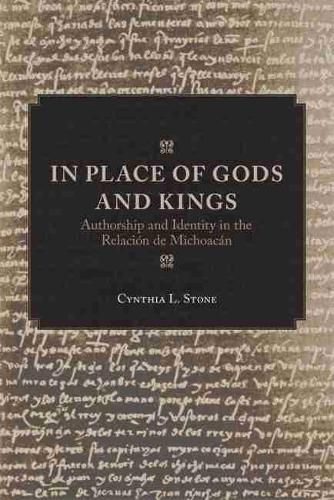Readings Newsletter
Become a Readings Member to make your shopping experience even easier.
Sign in or sign up for free!
You’re not far away from qualifying for FREE standard shipping within Australia
You’ve qualified for FREE standard shipping within Australia
The cart is loading…






In Place of Gods and Kings presents a new reading of an important manuscript that has long been considered the foremost colonial-era source for information related to the indigenous inhabitants of the Mexican state of Michoacan.
Drawing on recent trends in literary studies that call into question the universal validity of notions such as the unitary author and the primacy of alphabetic writing over oral and pictorial traditions, Cynthia L. Stone shows how this early relacion (c. 1538-41) weaves together narrative strands representing the distinctive voices of four primary contributors.
According to the Franciscan compiler, Jeronimo de Alcala, the manuscript is a testament to enlightened colonial officials who recognized that some familiarity with native customs and beliefs would further the goals of evangelization and Spanish rule. This symbolic bridge between prehispanic and colonial times was articulated differently by the friar’s indigenous collaborators, however, who refused to accept their alleged cultural inferiority or fully renounce their previous allegiances.
Thus, the drawings of the indigenous painters, reproduced in this volume in both color and black and white, evoke the sacred Mesoamerican tradition of
writing in pictures.
The epic history narrated by the former high priest pays tribute to the great regional culture hero, Tariacuri. And the account of the Spanish conquest provided by the indigenous governor converts the military defeat of his people into a moral victory and a paradigm for cultural survival.
$9.00 standard shipping within Australia
FREE standard shipping within Australia for orders over $100.00
Express & International shipping calculated at checkout
In Place of Gods and Kings presents a new reading of an important manuscript that has long been considered the foremost colonial-era source for information related to the indigenous inhabitants of the Mexican state of Michoacan.
Drawing on recent trends in literary studies that call into question the universal validity of notions such as the unitary author and the primacy of alphabetic writing over oral and pictorial traditions, Cynthia L. Stone shows how this early relacion (c. 1538-41) weaves together narrative strands representing the distinctive voices of four primary contributors.
According to the Franciscan compiler, Jeronimo de Alcala, the manuscript is a testament to enlightened colonial officials who recognized that some familiarity with native customs and beliefs would further the goals of evangelization and Spanish rule. This symbolic bridge between prehispanic and colonial times was articulated differently by the friar’s indigenous collaborators, however, who refused to accept their alleged cultural inferiority or fully renounce their previous allegiances.
Thus, the drawings of the indigenous painters, reproduced in this volume in both color and black and white, evoke the sacred Mesoamerican tradition of
writing in pictures.
The epic history narrated by the former high priest pays tribute to the great regional culture hero, Tariacuri. And the account of the Spanish conquest provided by the indigenous governor converts the military defeat of his people into a moral victory and a paradigm for cultural survival.